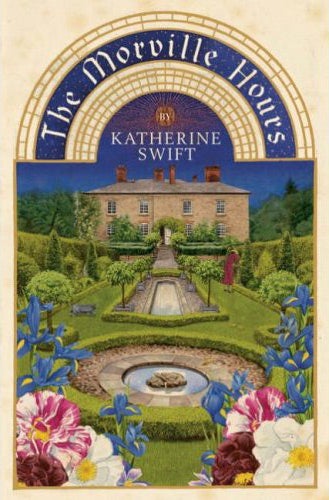The Morville Hours, By Katherine Swift
Digging deep: how an impractical dream turned into an enchanted garden

Measured time is the heartbeat of The Morville Hours: a 20-year lease, the seasons of the gardener's year, the hours of the monastic day, the quartered hours of the church clock, the fleeting moment... and time stretching backwards, the recorded past, history and prehistory of a particular place.
Katherine Swift digs or leans on her spade, looking, listening, imagining, as the garden she has determined to make takes on its own life, and 20 years of hers flow on. This singular, remarkable work is only at its baldest an account of creating a garden. It is also a tumult of observation and the love of knowledge, shot through with glints of autobiography.
In 1988, Katherine and her husband, Ken Swift, leased the Dower House, Morville, Shropshire, from the National Trust for 20 years. Her intention was that she, an untried gardener, would dig up a field and create a large, elaborate garden, despite having "no money and no income". Few books get written about My Failure To Realise an Impractical Dream, and in this case a fairy godmother stepped in to smooth the way. She took the form of a grand old lady who had reason to believe in Swift and was well in with the National Trust. Apart from that, sheer vitality, work, force of vision and a patient husband seem to have carried the project forward.
Turf Maze, Canal Garden, Cloister Garden, Spinney, Wild Garden, Lammas Meadow, Knot Garden, filled with old-fashioned narcissus, choice iris and auricula, David Austin English roses, filberts and Reine Claude Violette: it's that sort of place; a dream, in other words. Indeed, a dream of a dream: as the scholarly Swift points out, the illustrations to the medieval Books of Hours from which she took inspiration were already harking back to a golden past.
Because of its complexity, readers will find this book engaging in different ways. Its beautiful presentation, with beguiling cover and illustrations by David Burford, may suggest a good present for a gardening aunt. But gardening is really only the theme, the variations being church history (Morville was a priory before the Reformation), local history, geology, garden history, natural history, poetry, personal history (troubled), archaeology, astronomy... In essence, it is the story of a brilliant mind seeking the stability and grounding that comes from a combination of manual and mental labour. Hats off to making the unlikely happen, and writing so well about it, too.
Join our commenting forum
Join thought-provoking conversations, follow other Independent readers and see their replies
Comments